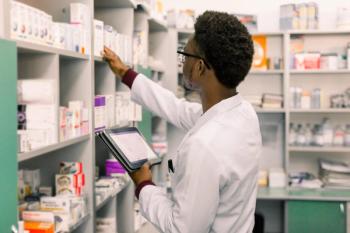
- Drug Topics June 2019
- Volume 163
- Issue 6
A Closer Look at Sunscreens
Deciding which sunscreen to apply has become a complicated business.
Summer is here, and the time is right to buy and apply sunscreens, or at least this is the time when most Americans think about sunscreens. But deciding when, where, how much, and what kind of sunscreen to apply has become a pretty complicated business.
The bottom line remains the same: using sunscreens can help prevent sunburn and skin damage and reduce the risk of developing skin cancer. But new research on the systemic absorption and effects of sunscreen ingredients, as well as ecological effects, is making what used to be a relatively simple choice more difficult.
Sunscreens are formulated to work on the surface of the skin. It had previously been thought that sunscreens would not be absorbed systemically in appreciable quantities; however,
Trending:
Now, the FDA is taking a closer look at sunscreen ingredients. In February, the agency issued a
In November 2018, Zambrana and colleagues presented new data at the American Association of Pharmaceutical Scientists PharmSci 360 Meeting showing that heat and reapplications may influence the safety and toxicity of the UV filters in sunscreens. The findings suggest that current safety testing procedures may be underestimating the amount of oxybenzone being absorbed into the skin by someone sunbathing on a beach.
Consumers should be applying sunscreen several times a day across large portions of their body when they are out in the sun. Ingredients from sunscreens have been found in blood, urine, and breast milk. There has always been a concern that individuals may inadvertently inhale sunscreen when spraying it on or ingest some of the ingredients when applying products to their lips, potentially harming the lungs or internal organs.
Companies commonly add a form of vitamin A to sunscreens and moisturizers with SPF. Vitamin A may help contribute to skin tumors and lesions when used on skin in the presence of sunlight.
Read More:
“I am not concerned about vitamin A penetration,” says
Currently, several groups of investigators are looking at whether ingredients in sunscreens may adversely affect hormonal levels, including testosterone levels in adolescent boys. Other studies have raised red flags about oxybenzone exposure during pregnancy. Perucci-Bailey does not think that the hormonal effects of sunscreens are a significant concern and that pregnant women should be advised to use sunscreens appropriately. “There is no evidence to support avoidance of sunscreens while pregnant,” she says. If a woman is concerned and wants to avoid use of sunscreens with oxybenzone or retinyl palmitate she would recommend a barrier sunscreen.
To complicate the subject of sunscreens further, some ingredients in sunscreens may be harmful to marine animals. Researchers found octocrylene, which is also in some cosmetics and hair products, may buildup in coral and become toxic to marine organisms. Studies have shown that sunscreen ingredients shed by swimmers can contribute to coral reef decline. The state of Hawaii has banned sunscreens containing oxybenzone and octinoxate, two chemicals known to harm coral.
Sunscreens and Skin Cancers
There is overwhelming evidence that sunscreen prevents or limits sunburn, which is what causes skin cancer. Although there is no proof that sunscreens prevent all types of skin cancers, sunscreens are still the best-known prevention. “Sunscreens are always recommended when people are going to be exposed to intense ultraviolet rays. Experts recommend that the highest possible SPF values be used to avoid painful sunburns which can cause various types of skin damage including predisposition to various skin cancers, including basal cell, squamous cell, and melanoma,”
Trending:
Sunscreens effectively protect against UV exposure, Phillips says. The majority of skin cancers arise from exposure to UV radiation which tends to be chronic, accumulating over decades. “There is a wealth of human safety data for sunscreens.” said Phillips.
Phillips says he believes pharmacists play a key role in advising patients about skin cancer prevention. They can effectively counsel patients about which medications they may be taking that are photosensitizing.
Pharmacists also can help patients review all their drug regimens and identify any agents that may increase skin cancer risk, such as immunosuppressive medications, voriconazole, and other agents, Phillips notes. “I tend to direct children and those with sensitive skin towards the physical-blocking sunscreens. “
“Pharmacists can also reinforce proper techniques for using sunscreens,” adds Kloth.
Articles in this issue
over 6 years ago
Opinion: Data is a Vital Resource in Fighting the Opioid Crisisover 6 years ago
Why Technology Upkeep is Up to Youover 6 years ago
Five Tech Best Practicesover 6 years ago
New Drug Review: Zulresso (Brexanolone)over 6 years ago
Opinion: The Future of Pharmacyover 6 years ago
Discount Drug Cards Are Flourishingover 6 years ago
How to Keep Your Professional Development Currentover 6 years ago
10 Ways to Boost Customer Loyaltyover 6 years ago
Opinion: PharmD Quality vs Quantityover 6 years ago
On the Road to Provider StatusNewsletter
Pharmacy practice is always changing. Stay ahead of the curve with the Drug Topics newsletter and get the latest drug information, industry trends, and patient care tips.





























































































































